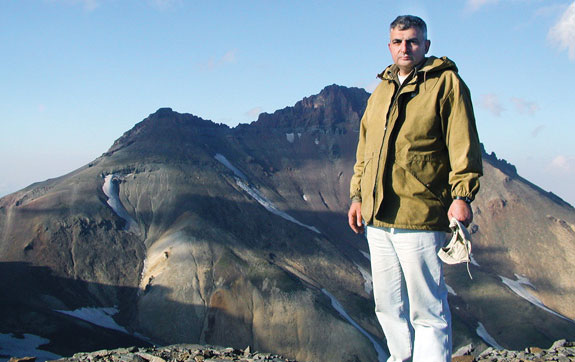Armenia detects space weather
On Mount Aragats, the highest point in the Armenian landscape, atop a volcano ribboned with glaciers, lava-born fissures, and medieval fortifications, an early 20th century observatory is leading Armenian physics in new, 21st century directions.
After the fall of the Soviet Union, Armenian researchers realized they could not afford to maintain their observatories and develop large detectors for competitive research in highenergy physics.
Taking advantage of the airy altitude of their observatories, they began investigating new avenues of research.
We found our niche in the relatively new science of space weather, explains Ashot Chilingarian, director of the Yerevan Physics Institute. You dont need a huge detector to make excellent physics. Instead, you need a small detector in the appropriate place.
Research into solar flares and geomagnetic storms is increasingly valuable as the world depends more on satellite technologies. Solar flares, for example, can knock out an entire satellite or power grid.
The ground-based detectors designed and fabricated by Armenian scientists, each no wider than a meter, complement space-based systems that forecast space weather. They record millions of particles produced in cosmic ray showers from the sun.
The success of these detectors has contributed to their dispersal around the globe. Armenia leads the Space Environmental Viewing and Analysis Network, or SEVAN, and has crafted SEVAN detectors for Croatia, Bulgaria, India, and Slovakia. This network can provide reliable 24-hour forecasting and advanced solar storm warnings, crucial to sophisticated technologies that protect astronauts and your next door neighbors GPS.
Another detector program studies the multiplication and acceleration of electrons in thunder clouds, which can affect air travel. This little-understood phenomenon has been puzzling scientists since the 1990s.
Daisy Yuhas
Click here to download the pdf version of this article.
 |
| Photo courtesy of Ashot Chilingarian |






